For countless dog owners, nail trimming is akin to entering a battlefield. The anticipation, the apprehension, and those pleading puppy eyes – it’s enough to send anyone’s stress levels skyrocketing. If you’re nodding your head in agreement, you’re not alone. But here’s the good news: it doesn’t have to be that way! Nail clipping can be a calm, even bonding experience when done right. Drawing from years of veterinary expertise and countless pawdicures, we’ve compiled a list of 5 indispensable tips to help reduce stress when clipping your dog’s nails. Because your pet deserves nothing but the best care – minus the anxiety. Dive in and discover how to make nail-trimming a walk in the park. 🐾
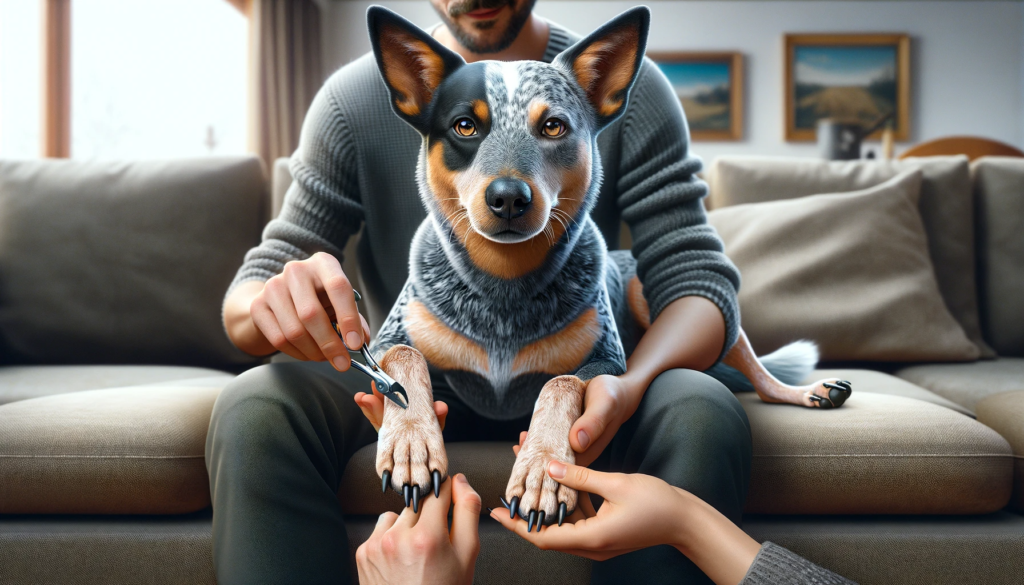
Understand the Anatomy of Your Dog’s Nail
Taking care of our canine companions goes beyond ensuring they’re fed and walked regularly. One essential aspect, often overlooked, is understanding the intricacies of their nails. Before you even consider picking up those clippers, it’s crucial to understand what’s beneath the surface. Here’s a quick deep-dive into the anatomy of your dog’s nail.
The Keratin Shell
Just like human nails, the outermost layer of a dog’s nail consists of a hard, protective keratin shell. This is the part you’ll trim. It’s sturdy and protects the more sensitive structures inside.
The Quick
Delving a bit deeper, you’ll encounter the ‘quick.’ This part of the nail is living tissue, filled with blood vessels and nerves. Accidentally cutting into the quick is a common fear, and for a reason – it’s painful for your pup and can lead to bleeding. In dogs with lighter-colored nails, the quick is visible as a pinkish core. However, for those with darker nails, it becomes trickier to identify.
The Pulp
Surrounding the quick and lying beneath the keratin shell is the pulp. This layer is dense and fibrous, providing strength to the nail. While it doesn’t house as many nerve endings as the quick, it’s still essential to be cautious when trimming near this area.
The Nail Bed
The nail bed is the skin beneath the nail plate. If you ever hear of a dog suffering from a nail bed infection, it’s this area that’s affected. Keeping nails trimmed and clean can help prevent such complications.
Understanding these different parts of your dog’s nail anatomy is not just about becoming a pet care guru. It’s about ensuring that when you do take up the task of nail clipping, you do so with confidence, precision, and utmost care. After all, knowledge is the best tool in any dog owner’s arsenal.

Choose the Right Nail Clipper
Ah, the age-old dilemma of every dog parent – which nail clipper is the best for my furry friend? Much like shopping for our own essentials, there’s no one-size-fits-all when it comes to selecting the right nail clipper for dogs. It’s not just about finding a sharp pair, but also about ensuring comfort, safety, and precision. Let’s paw through the options and uncover how to choose the best one for your canine companion.
The Guillotine Style
This may sound a bit medieval, but fret not! The guillotine-style clipper has a hole where you insert the tip of your dog’s nail. As you squeeze the handles, a blade slides across and slices the nail. These are great for smaller breeds with softer nails but might struggle with the thick nails of larger dogs.
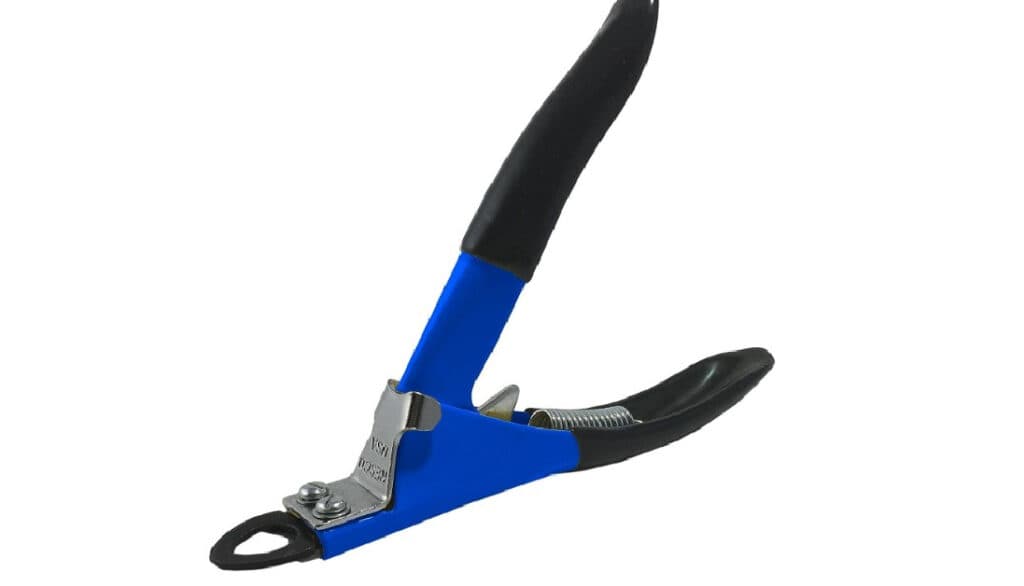
The Scissor Style
Resembling a pair of scissors, this style of nail clipper is often preferred for bigger breeds with harder nails. The scissor action provides the strength needed to trim tougher nails cleanly and quickly.
Grinder Tools
These are electric devices designed to grind down a dog’s nail rather than cutting it. They can be an excellent choice for those who fear cutting into the quick, as they offer more control. However, some dogs might be spooked by the noise and vibration. It’s essential to introduce grinder tools slowly and with lots of positive reinforcement.
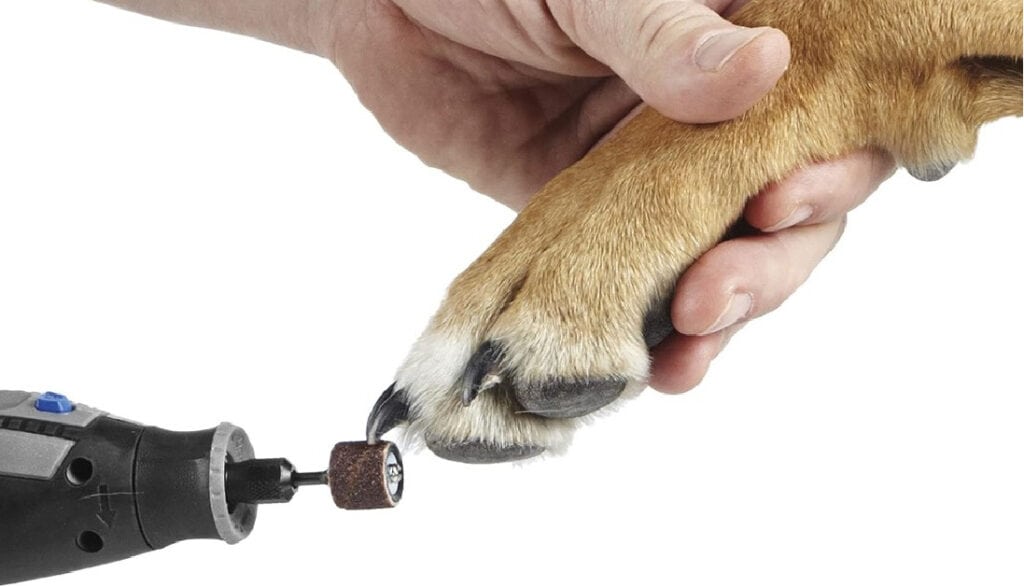
Size Matters
Regardless of the type, always choose a clipper size that matches your dog’s size. A too-large clipper can cause injury, while a too-small one might not do the job effectively.
Sharpness is Key
Always ensure your clippers are sharp. Dull clippers can crush the nail instead of creating a clean cut, causing discomfort or even pain to your pet.
Finally, remember to trust your instincts and prioritize your dog’s comfort. If you’re unsure about which tool to choose, seeking advice from your vet or a professional groomer can provide valuable insights tailored to your dog’s needs. After all, nail clipping shouldn’t be a dreaded chore – with the right tools and knowledge, it can be a breeze!

Create a Calm Environment
Setting the right mood is not just essential for spa days or romantic dinners, but also for trimming your dog’s nails. Believe it or not, our furry friends can pick up on our energy, and if we’re anxious, they’ll likely be too. The environment plays a significant role in determining how smooth or chaotic the nail-trimming process will be. Here’s how to create a zen zone for your dog to make nail clipping as stress-free as possible.
Choose the Right Time
It’s best to approach nail trimming when your dog is naturally calm. Perhaps after a long walk or play session when they’re tired. If you try to trim an energetic pup’s nails, you’re setting yourself up for a game of chase!
Pick a Comfortable Spot
Find a quiet, well-lit place in your home. Avoid areas with a lot of foot traffic or loud noises. A familiar spot where your dog often relaxes can be a good choice.
Play Soothing Music
Sounds a bit out there? Well, several studies have shown that certain types of music, especially classical, can have a calming effect on dogs. Playing soft tunes in the background can help drown out the noise of the clippers or grinder and create a serene atmosphere.

Use Positive Reinforcement
Have treats at the ready! Reward your dog with their favorite snack after clipping each nail. This not only distracts them from the process but also associates nail trimming with positive experiences.
Stay Calm and Relaxed
Your dog is incredibly attuned to your emotions. Take deep breaths, maintain a calm demeanor, and use gentle, reassuring words. If you’re anxious, consider practicing a few times with the clippers without actually cutting to get both you and your dog used to the process.
Consider Aromatherapy
Just as certain scents can relax humans, they can have a similar effect on dogs. Consider using a dog-safe calming spray or diffusing essential oils like lavender (always ensure they’re pet-safe and used in moderation).
Remember, the goal is to make nail trimming a routine and non-threatening experience. While it might take some time and patience, creating a calm environment will pay off in the long run, transforming what was once a dreaded task into a peaceful bonding moment with your four-legged friend.

Get Your Dog Accustomed to Handling
If you’ve ever tried to give a toddler their first haircut or coax a cat into a carrier, you know that introducing someone (or somepup) to a new experience requires patience and tact. Getting your dog accustomed to handling, especially when it comes to their paws, is no different. Many dogs are naturally sensitive about their feet being touched. Yet, this step is pivotal not only for nail trimming but also for overall grooming and health check-ups. Let’s walk through how you can help your dog become more comfortable with handling.
Start Early
If you have a puppy, now’s the perfect time to start. But remember, it’s never really too late. The key is consistency. Begin by gently touching your pup’s paws, without any intention of clipping. Make it a part of your daily cuddle sessions.
Short and Sweet
Initially, keep the sessions brief. A mere few seconds of paw handling followed by lots of praise and perhaps a treat can go a long way. Gradually increase the time as your dog becomes more comfortable.
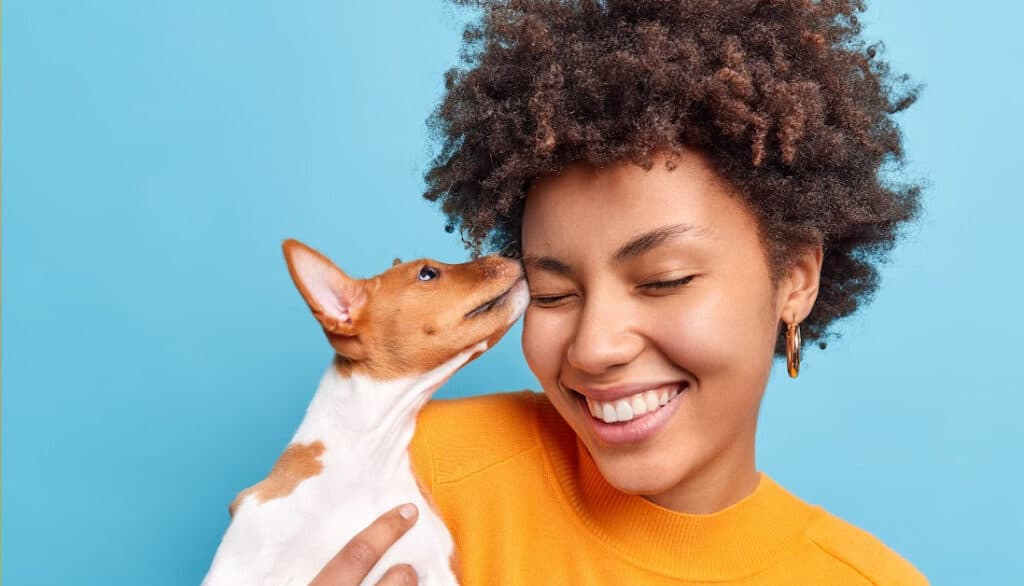
Associate with Positive Experiences
While touching or holding their paws, give your dog a treat, or play with them using their favorite toy. The goal is to make them associate paw handling with good times!
Practice with the Clippers
Once your dog is okay with you handling their paws, introduce them to the nail clippers. Let them sniff and inspect them. Touch the clippers to their paws without actually cutting. This desensitization can make the real trimming session much smoother.
Stay Calm and Be Patient
If your dog pulls away or shows signs of discomfort, don’t force it. End the session, give them a treat, and try again another day. Remember, this is a marathon, not a sprint. Your patience will be rewarded.
In the grand scheme of things, getting your dog accustomed to handling is about more than just nail trimming. It’s about building trust and ensuring your dog feels safe and secure, whether you’re giving them a belly rub, a bath, or tending to their paws. With time, patience, and love, handling can transform from a challenging task into a cherished bonding activity.
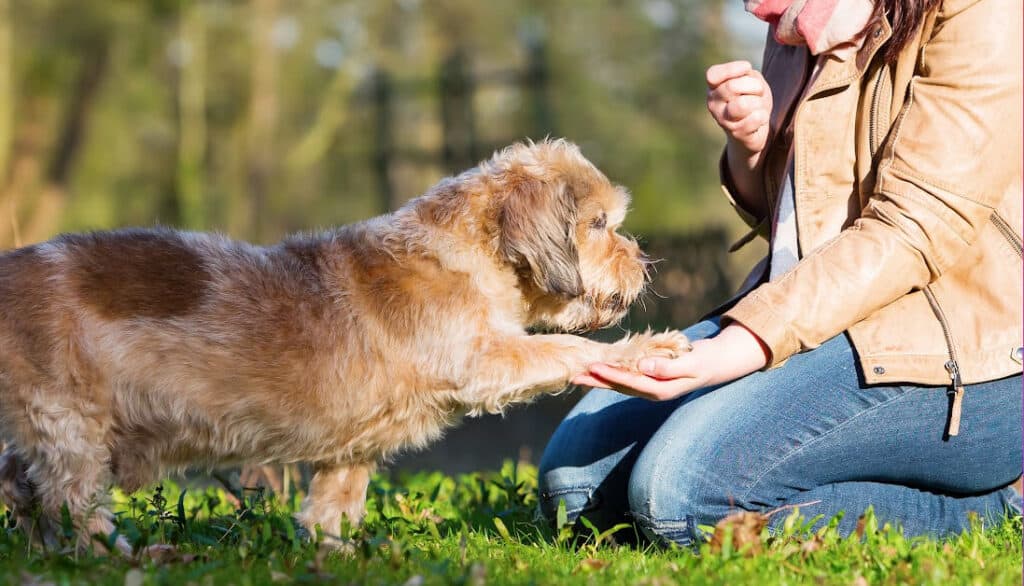
Start Slow and Take Breaks
Let’s be real; very few dogs sprint towards their owners with joy at the mere sight of nail clippers. For many pets (and their parents!), nail trimming is a gradual process, kind of like learning to dance. You wouldn’t try to whirl into a waltz without first mastering the basic steps, would you? Similarly, when it comes to clipping those claws, the rhythm of “starting slow and taking breaks” is your go-to groove. Here’s how to strike the right pace and ensure both you and your pup remain stress-free.
Less is More
When starting, you might be tempted to trim all the nails in one go, especially if they look particularly long. Resist that urge. Instead, try clipping just one or two nails in the first session, rewarding your dog generously. This can make the experience less overwhelming.
Paws and Reflect
Watch your dog’s body language closely. If they seem uneasy or anxious after a nail or two, it’s a sign to pause. Take a moment, offer some cuddles or playtime, and only resume once they’re more relaxed. Remember, there’s no rule that all nails need to be trimmed in one sitting.

Create a Routine, Not a Marathon
Instead of one long session, consider multiple short sessions spread over a few days. This approach can help your dog get accustomed to the process without associating it with extended periods of discomfort.
Celebrate the Small Wins
Every single nail you manage to trim without stress is a victory. Celebrate these moments with treats, praises, or a short play session. Let your dog know they’re doing a great job, and soon enough, they might just start seeing the nail clippers as a precursor to treat time.
Know When to Stop
If, on any day, your dog seems exceptionally agitated or scared, it’s okay to skip nail trimming. Forcing it can lead to negative associations, making future sessions even more challenging. Always prioritize your dog’s comfort and well-being.
Nail trimming is as much about understanding your dog’s emotions as it is about the act itself. By starting slow and taking breaks, you’re not only taking care of their physical well-being but also nurturing trust and understanding. Over time, this patient approach will lay the groundwork for easier, quicker, and more stress-free nail trimming sessions in the future. Remember, every dance begins with a single step.

Seek Professional Guidance if Necessary
Alright, let’s paint a picture: You’ve done your research, got the best clippers, set the mood with soft lighting and soothing music, but every time you bring out those nail clippers, your dog looks at you like you’ve just proposed a trip to the moon. What now? It’s essential to recognize when it’s time to call in the pros. There’s absolutely no shame in admitting that sometimes, our furry friends might need an expert hand. Let’s delve into when and why seeking professional guidance might be the best route for you and your pup.
Reading the Signs
Your dog’s behavior speaks volumes. Excessive trembling, growling, hiding, or even signs of aggression are indicators that they’re not just nervous, but genuinely scared. Consistently encountering this level of anxiety despite your best efforts means it might be time to seek external help.
The Benefits of a Professional Touch
Veterinarians and professional groomers have experience dealing with a myriad of dog personalities and nail-trimming temperaments. They have techniques, tools, and tricks up their sleeves that can make the process smoother. Plus, they can often get the job done quickly, reducing the stress duration for your pet.
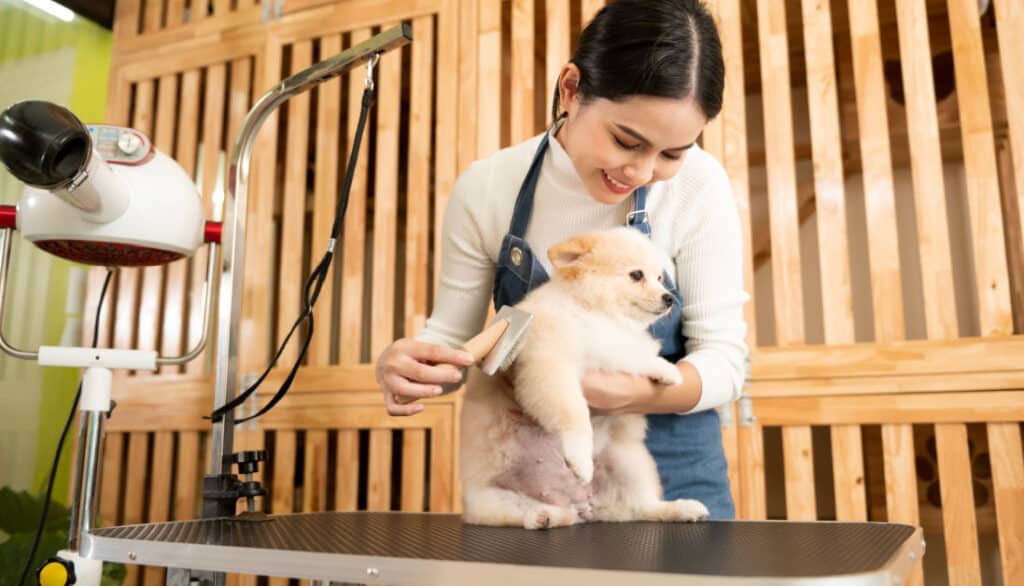
A Learning Experience for You
Watching a professional handle your dog can be immensely educational. Observing their techniques, from how they hold the paw to how they soothe an anxious pup, can provide insights and tips that you can use in the future.
Avoiding Accidents
If you’re worried about cutting into the quick, especially if your dog has darker nails, a professional can ensure a safe trim. An accidental cut can be painful for your dog and might create a long-lasting aversion to nail clipping.
Consultations and Training
If your dog’s anxiety runs deep, a session with a canine behaviorist or trainer can be beneficial. They can offer tailored strategies, training routines, and sometimes even recommend calming aids to make nail trimming and other grooming tasks more manageable.
In the grand journey of dog parenthood, seeking help doesn’t imply defeat. It’s an act of love, a testament to your commitment to your dog’s well-being. Whether you opt for regular professional trims or just need a session or two before taking the reins yourself, remember that at the heart of it all is the desire to provide the best care for your four-legged family member. Sometimes, that means recognizing when it’s time to tag in an expert.

Conclusion
Navigating the world of dog nail trimming can feel like tiptoeing on a tightrope. On one side, there’s the fear of causing discomfort to your beloved pet, and on the other, the knowledge that regular nail care is vital for their well-being. But remember, every dog owner has been where you are now, pondering the best approach, and perhaps nursing a scratch or two from a less-than-perfect attempt.
The journey to stress-free nail trimming is paved with patience, understanding, and a pinch of perseverance. Whether you become a pro at home grooming or decide to trust the steady hands of professionals, what matters most is the love and care you shower on your furry companion.
So, the next time those claws start clicking on your floor, take a deep breath, recall the tips and tricks from this guide, and step forward confidently. With each snip and clip, you’re not just ensuring your dog’s physical health but also deepening the bond of trust between you two. After all, at the heart of every grooming session is a tale (or tail!) of love, care, and the unspoken promise to always look out for one another. Happy trimming!

Frequently Asked Questions (FAQs)
The frequency can vary based on your dog’s activity level and where they spend most of their time. Dogs that walk on concrete or hard surfaces might naturally wear down their nails and require less frequent trimming. On average, most dogs need their nails trimmed every 3-4 weeks. However, always keep an eye on the nail length and listen for that tell-tale clicking sound on hard floors.
First, don’t panic! Accidentally cutting the quick can be a bit painful for your dog and might cause bleeding. Have styptic powder or cornstarch on hand; applying it to the bleeding nail can help stop the bleeding quickly. Gently soothe and reassure your dog, and give them a treat for being patient. If bleeding doesn’t stop within a few minutes or seems excessive, consult your vet.
It’s recommended to use tools specifically designed for dogs. Human nail clippers might not be strong enough, especially for larger breeds, and can potentially split or crush the dog’s nail. Dog nail clippers come in various types, like guillotine-style or scissor-style, and are designed to cut the nail efficiently and safely.
Black or dark nails can indeed make it challenging to spot the quick. When trimming, make tiny cuts and look at the nail head-on after each snip. When you start to see a dark circle with a lighter center, you’re getting close to the quick and should stop.
Absolutely! Many dog owners prefer grinders because they slowly sand down the nail, reducing the risk of hitting the quick. They can be especially useful for dogs with thick, hard nails. However, some dogs might be scared of the vibration or noise, so introduce it gradually and positively associate it with treats and praise.
